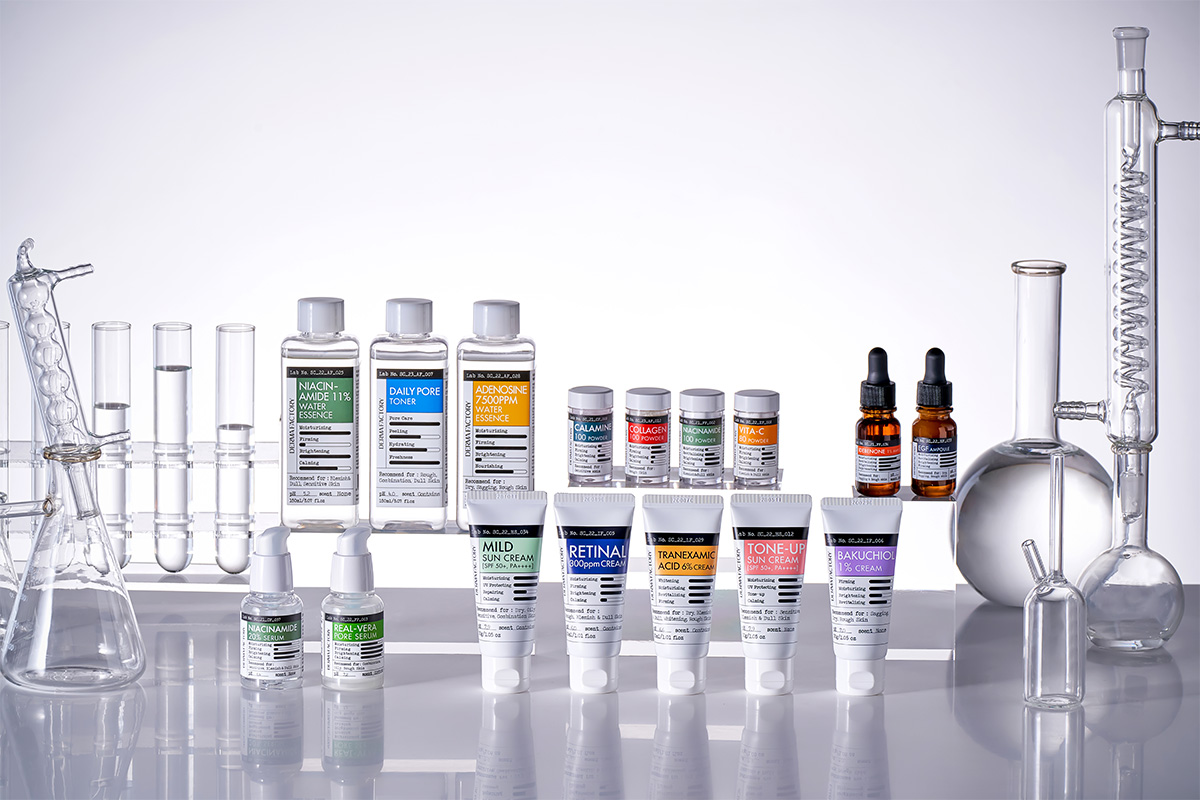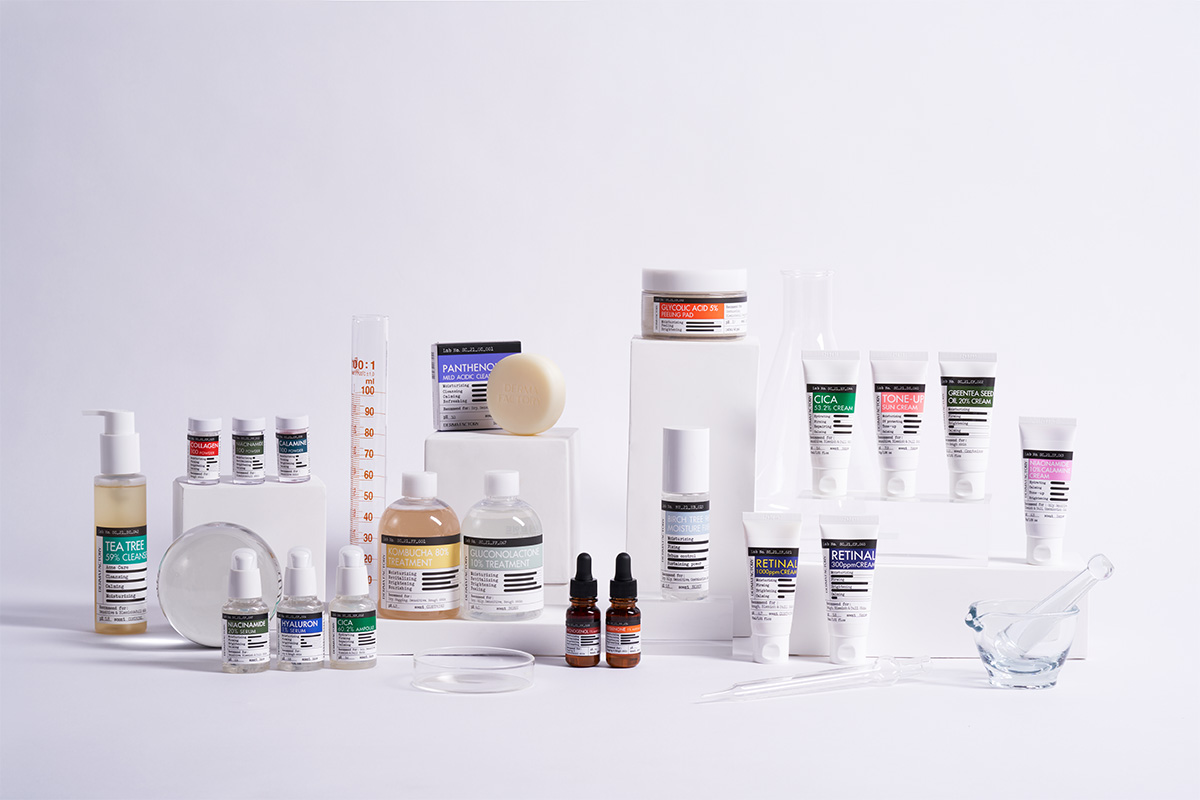B&B Korea through its Derma Factory, where innovation meets affordability, efficacy, and transparency, setting new standards in skincare.

In recent years, Korean cosmetics exports have achieved a remarkable milestone, reaching 10 trillion KRW for two consecutive years. This accomplishment has positioned Korea as the fourth-largest cosmetics exporter globally, following France, the United States, and Germany. The substantial growth in this sector can be attributed to the proliferation of numerous innovative brands, particularly in the field of skincare products. I am eager to hear your perspective on the reasons behind the robust development of the K-beauty sector. Additionally, when do you foresee Korean products becoming mainstream in markets such as the U.S. and Europe?
I believe the driving force behind this growth is the phenomenon known as the Korean Wave or Hallyu. Unlike beauty powerhouses such as Europe, which entered the cosmetics market much earlier and possesses more proprietary technology, Korea entered the market relatively late. Nevertheless, Korea has successfully captured significant interest and attention, thanks to two key factors: change and speed. Allow me to elaborate on the concept of change first.
In Europe, when a brand launches a product, it tends to remain in the market for an extended period. In contrast, Korean consumers have a rapid turnover of preferences and constantly seek new products. Trends change swiftly, and to meet such dynamic consumer demands, the industry must consistently innovate and introduce new products.
The second factor, speed, is encapsulated by the Korean phrase "bbal-li bbal-li," reflecting the Korean preference for swift execution in various aspects of daily life. Whether it is services, internet connectivity, or paperwork, Koreans value efficiency. For example, the lead time for a product to reach a client after ordering in Europe or Japan is significantly longer than in Korea. In fact, we can expedite the process, reducing the lead time to one-third of that in other regions. As time progresses, consumer needs become increasingly diverse, demanding novelty. However, established powerhouses like Europe and Japan struggle to adapt quickly to these evolving trends. In contrast, Korea has the capability to swiftly respond to rapidly changing consumer needs and produce goods at a faster pace, resulting in cost reduction. These advantages are substantial benefits for our clients.
Moreover, the technology gap between Korea and existing powerhouses is narrowing. In these circumstances, speed emerges as the most crucial competitive edge. It will continue to play a pivotal role in the future as consumer demands evolve.
What is the potential of South Korea as a hub for OEM and ODM, and how significant do you envision it becoming? Within this landscape, what sets B&B Korea apart from other Korean competitors as an OEM or ODM?
As mentioned earlier, the technology gap is currently minimal. It took us a considerable amount of time to catch up with the technological prowess of the established powerhouses. On the flip side, I find it challenging for these powerhouses to acquire the capabilities of speed and adaptability. This, I believe, is something the existing powerhouses struggle to achieve, making it a unique competitive advantage for Korea. Regarding potential, I would say it remains uncertain. I firmly believe that ODM companies have greater potential in sustaining growth compared to existing brands. In the past, launching a new brand necessitated significant resources such as capital, R&D, design, product development, and marketing. However, ODM companies like us now offer all these services. We are not solely engaged in development or product manufacturing; our role extends beyond that. Brand companies can optimize costs by outsourcing these tasks to us, allowing them to focus solely on marketing and sales. This represents the distinctive competitiveness of ODM companies, and their growth is further fueled by acquiring the capability to provide such comprehensive services.
While it may be subject to debate, I believe a brand is distinct from branding. Nowadays, numerous marketing channels like YouTube, Instagram, and TikTok provide ample opportunities for brand promotion. This process has become quite accessible. Consequently, consumers can easily access cosmetics from ODM companies like us that offer high-quality products. In other words, it has become less challenging for individuals to launch and run their own brand, significantly contributing to the growth of ODM companies.
How does B&B Korea utilize its marketing capabilities to customize offerings and provide tailored advice to its partners? Additionally, how do you collaborate with international brands to deliver products that meet the diverse needs of customers?
We recently entered the global market, beginning this year, so I approach this topic with caution. In providing a firsthand experience, we collaborated with a vendor that conducted analyses of consumer needs in various regions. We developed products based on the analysis results, which proved to be a convenient approach. However, this method is limited to overseas markets. In the domestic market, we conduct our own research and proactively develop products. At our current stage, we may not be positioned to create tailored products for different races, but we recognize the growing need for such customization in the future.

One particular product that caught our attention is your Derma Factory serum, boasting a high concentration of niacinamide, specifically 20%. Additionally, your Cell:Monde series features nucleic acid-based products, known for effective cellular repair, renewal, antioxidant properties, and excellent moisture retention. Could you walk us through your proprietary product and brand lineup, highlighting the success you have achieved in Korea?
I'd like to delve into Derma Factory, a standout in our lineup. Few companies offer products with a 20% niacinamide concentration, considered notably potent. What sets us apart is not just the high concentration but our successful stabilization of 20% niacinamide. In Korea, the standard niacinamide content is 2%, as higher concentrations are often deemed unstable and potentially irritating. For Derma Factory, we incorporated a significant amount of stabilizing ingredients and underwent extensive testing to ensure stability. This meticulous process, I believe, is our advantage.
Expanding on Derma Factory, the term "derma" often conveys premium and high cost. Contrary to this perception, our goal was to create a product with high efficacy but low cost, akin to Fucidin ointment in Korea. Fucidin, priced at only 2000-3000 KRW, is highly effective. Leveraging our own manufacturing factory, we merged "derma" and "factory" to form the brand name, reflecting our commitment to being a cost-effective, highly accessible, and efficacious brand.
We provide comprehensive data on ingredient content for each product, disclosing information on any base material comprising 1% or more. This transparency reflects our acknowledgment of consumers' intelligence and desire for detailed information. B&B Korea was the first in Korea to disclose content information, demonstrating our candid, sincere, and confident approach to product quality. With monthly product launches, we consistently disclose ingredient content, emphasizing our commitment to incorporating high-quality ingredients.
The packaging of Derma Factory products is intentionally minimalistic, resembling pharmaceutical products. Eliminating product boxes reduces costs, contributing to our competitively low product prices. Our direct online sales further enhance our price competitiveness. Despite minimal marketing abroad, we've attracted interest from overseas companies. We've signed exclusive contracts with distributors in Vietnam and Russia, with ongoing negotiations in Thailand, Malaysia, Indonesia, the U.S., Romania, Albania, and Latin American countries. Furthermore, a Japanese online platform is seeking exclusive distribution rights, and we already have a product distributed in Nigeria.
It's fascinating how B&B Korea is fully integrated, handling the development and marketing of final brands on your own online platform. Additionally, you mentioned that from an ODM standpoint, you are expanding your services globally. Could you summarize the vision for B&B Korea and where you see the company in the next five years?
Considering the rapidly changing world, defining a long-term vision might seem somewhat futile at this point. However, I'd like to discuss the future directions for ODM companies. Traditionally, large ODM companies focused on manufacturing products for prominent brands. Yet, today, we witness the emergence of numerous indie brands that are gaining accessibility among consumers and experiencing rapid growth. B&B Korea has hands-on experience in nurturing indie brands through joint ventures or partnerships with other companies. Looking ahead, I believe that ODM companies must collaborate with these indie brands, leveraging their sales, marketing, or design capabilities. Such collaborative efforts, where each party contributes its unique strengths, can foster mutual growth over the long term. This collaborative approach represents our optimal future strategy.
While the success of an indie brand undoubtedly contributes to a company's growth, what brings the most fulfillment and pride is witnessing our partner companies, especially indie brands, succeed and thrive. To be candid, the work of ODM companies is demanding, with numerous aspects to manage. Our greatest joy comes not only from financial gains but, more importantly, from the success and growth of our partner companies. It is their achievements that truly make our efforts worthwhile and satisfying.
For more details, explore their website at https://smartstore.naver.com/dermafactory
0 COMMENTS